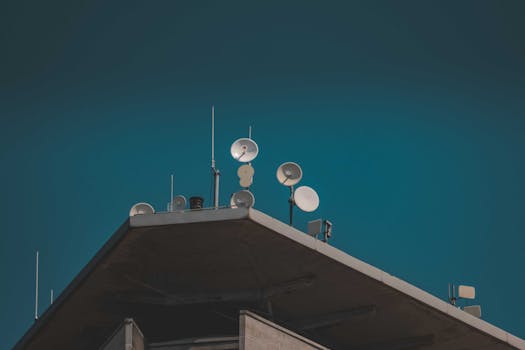
LEO satellites, or Low Earth Orbit satellites, are a type of satellite that operates at an altitude of around 160 to 2,000 kilometers above the Earth’s surface. LEO satellites have been gaining popularity in recent years due to their ability to provide faster and more reliable connections than traditional geostationary satellites. In this article, we will explore the benefits and applications of LEO satellites and how they are revolutionizing global connectivity.
The main advantage of LEO satellites is their low latency, which allows for real-time communication and data transfer. This is particularly useful for applications such as video conferencing, online gaming, and remote healthcare. Additionally, LEO satellites have a smaller footprint than geostationary satellites, which enables them to provide more targeted and efficient coverage. This makes them ideal for serving remote or underserved communities where traditional connectivity options are limited.
History and Development of LEO Satellites
The concept of LEO satellites has been around for several decades, but it wasn’t until the 1990s that the first LEO satellite constellations were launched. One of the pioneering companies in this field was Iridium, which launched a constellation of 66 LEO satellites in the late 1990s to provide global satellite phone coverage. Although the company faced significant financial challenges, its technology paved the way for future LEO satellite developments.
In recent years, several companies have launched their own LEO satellite constellations, including SpaceX’s Starlink, Amazon’s Kuiper Systems, and OneWeb. These constellations are designed to provide global broadband coverage, with the goal of bridging the digital divide and connecting millions of people around the world who lack access to reliable internet services.
Applications and Benefits of LEO Satellites
LEO satellites have a wide range of applications, from broadband internet and satellite phone services to Earth observation, navigation, and scientific research. One of the most significant benefits of LEO satellites is their ability to provide connectivity in areas where traditional infrastructure is limited or non-existent. This makes them an attractive solution for rural or remote communities, as well as for emergency responders and disaster relief teams.
LEO satellites are also being used for Earth observation and remote sensing applications, such as monitoring climate change, tracking natural disasters, and detecting crop health. Their high-resolution imaging capabilities and ability to collect data in real-time make them an invaluable tool for scientists, policymakers, and environmental organizations.
Challenges and Future Developments
Despite the many benefits of LEO satellites, there are also several challenges that need to be addressed. One of the main concerns is the risk of space debris, as the increasing number of LEO satellites in orbit poses a threat to other satellites and spacecraft. Additionally, there are regulatory challenges, as governments and international organizations work to establish guidelines and standards for the use of LEO satellites.
Looking to the future, it is clear that LEO satellites will play an increasingly important role in shaping the global connectivity landscape. As technology continues to evolve and improve, we can expect to see even more innovative applications of LEO satellites, from smart cities and IoT devices to autonomous vehicles and beyond.
In conclusion, LEO satellites are revolutionizing global connectivity with their fast and reliable connections, low latency, and targeted coverage. As the technology continues to develop and improve, it is likely that we will see even more exciting applications and innovations in the years to come.




